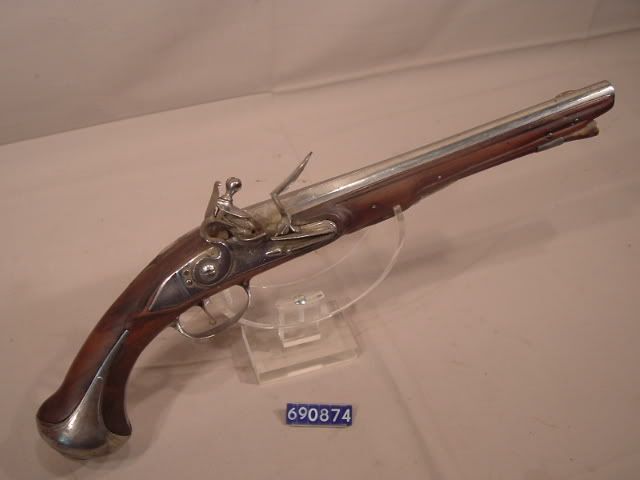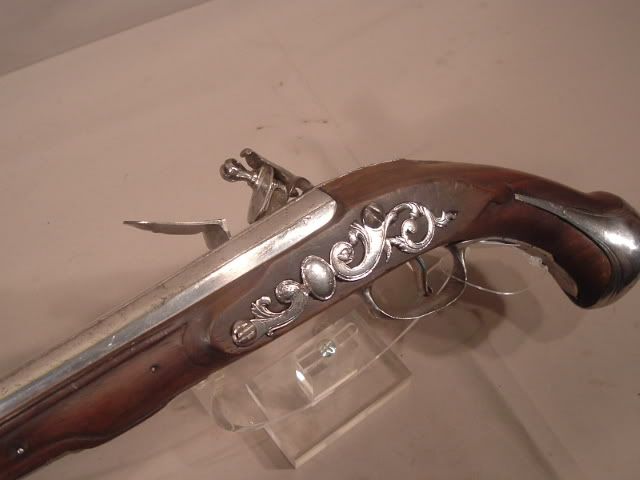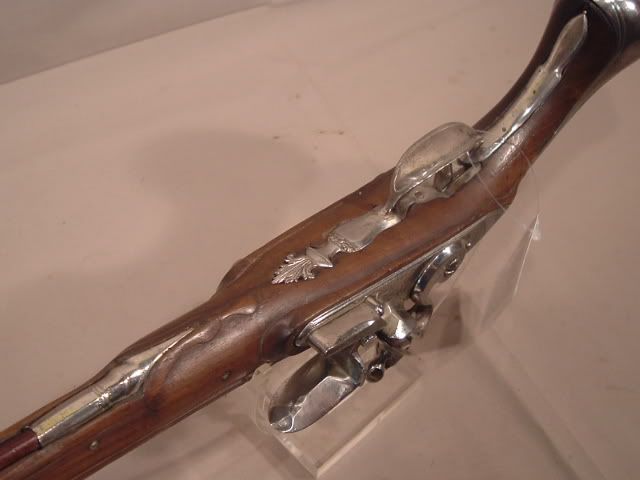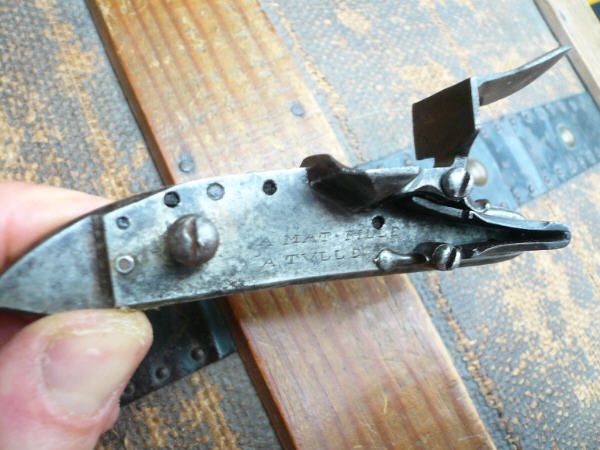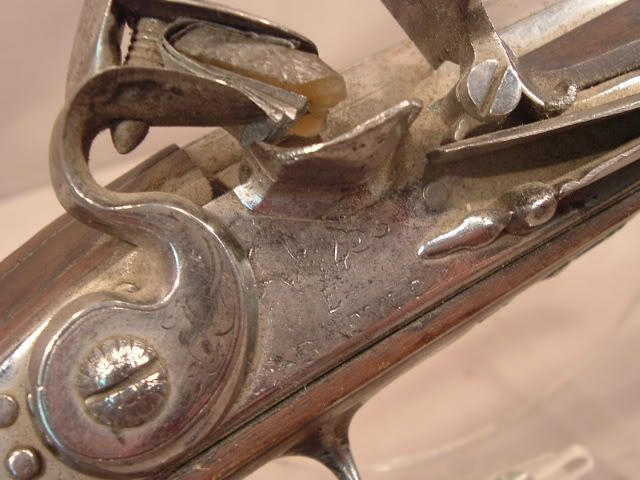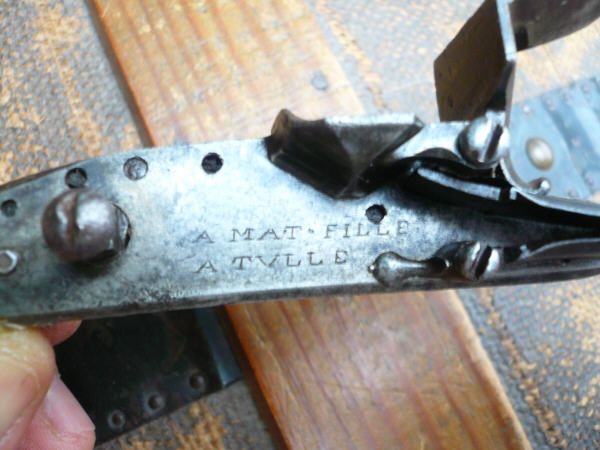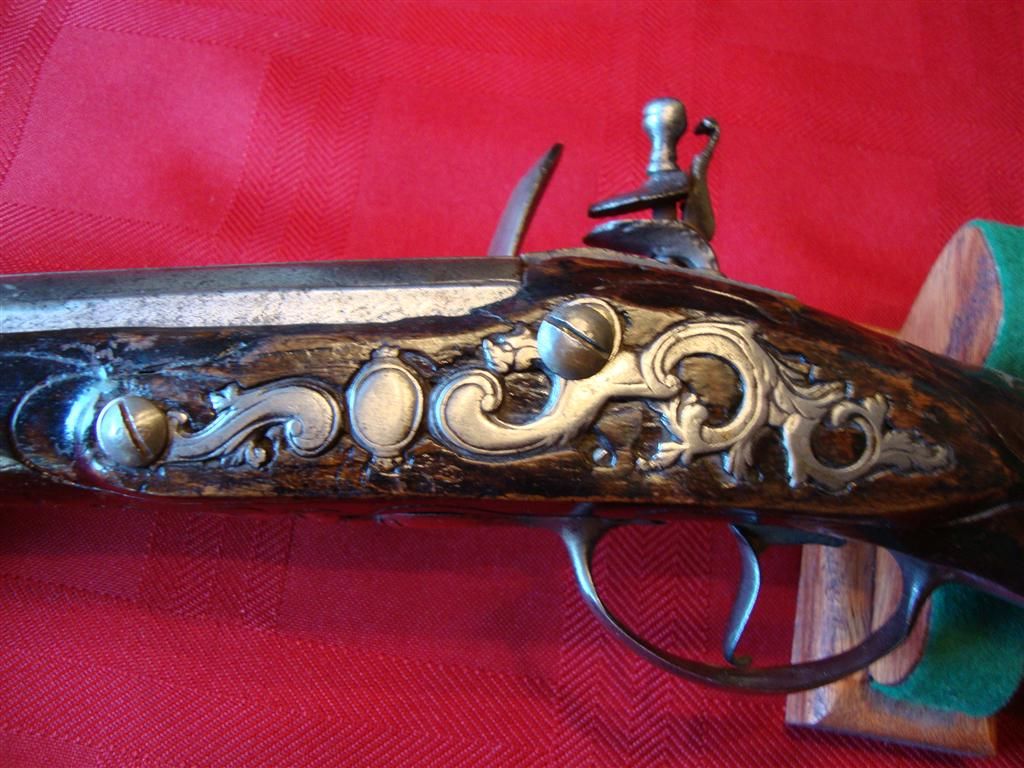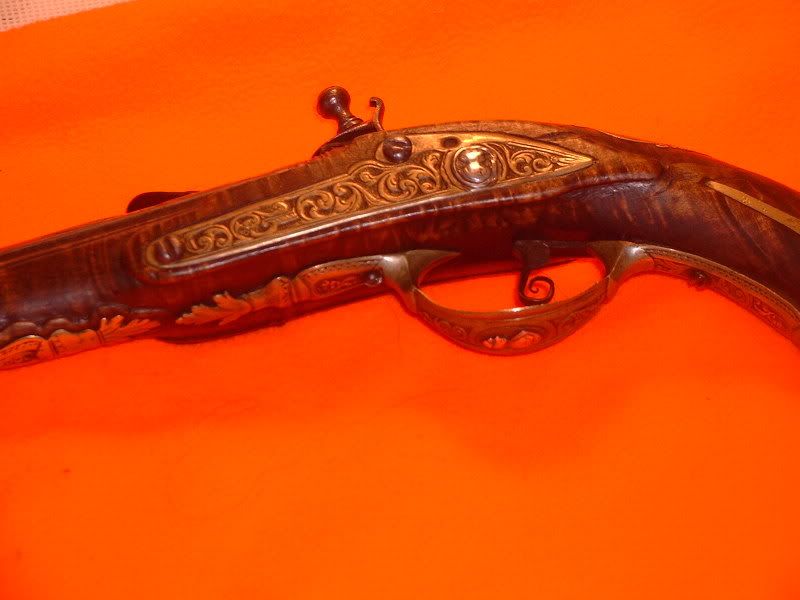Hey everyone,
What you are looking at is my first muzzleloader. I bought this little pistol at an auction this past September and didn't receive it until Christmas. It has beautiful engravings on the side plate and butt cap, which were enhanced by cleaning. With some 0000 steel wool and Hoppe's 9, I was able to remove rust and a black film that was originally scattered on the metal. The barrel was significantly pitted and rusted, but I was able to clean that out. After that, the whole gun was given an oil and Renaissance wax coating. The ramrod is unfortunately missing. I would appreciate it if anyone knows what kind of ramrod this took so I can maybe replace it with a new one. The title stated 1770 French Pocket Pistol, but thanks to Wes/Tex he was able to uncover its history.
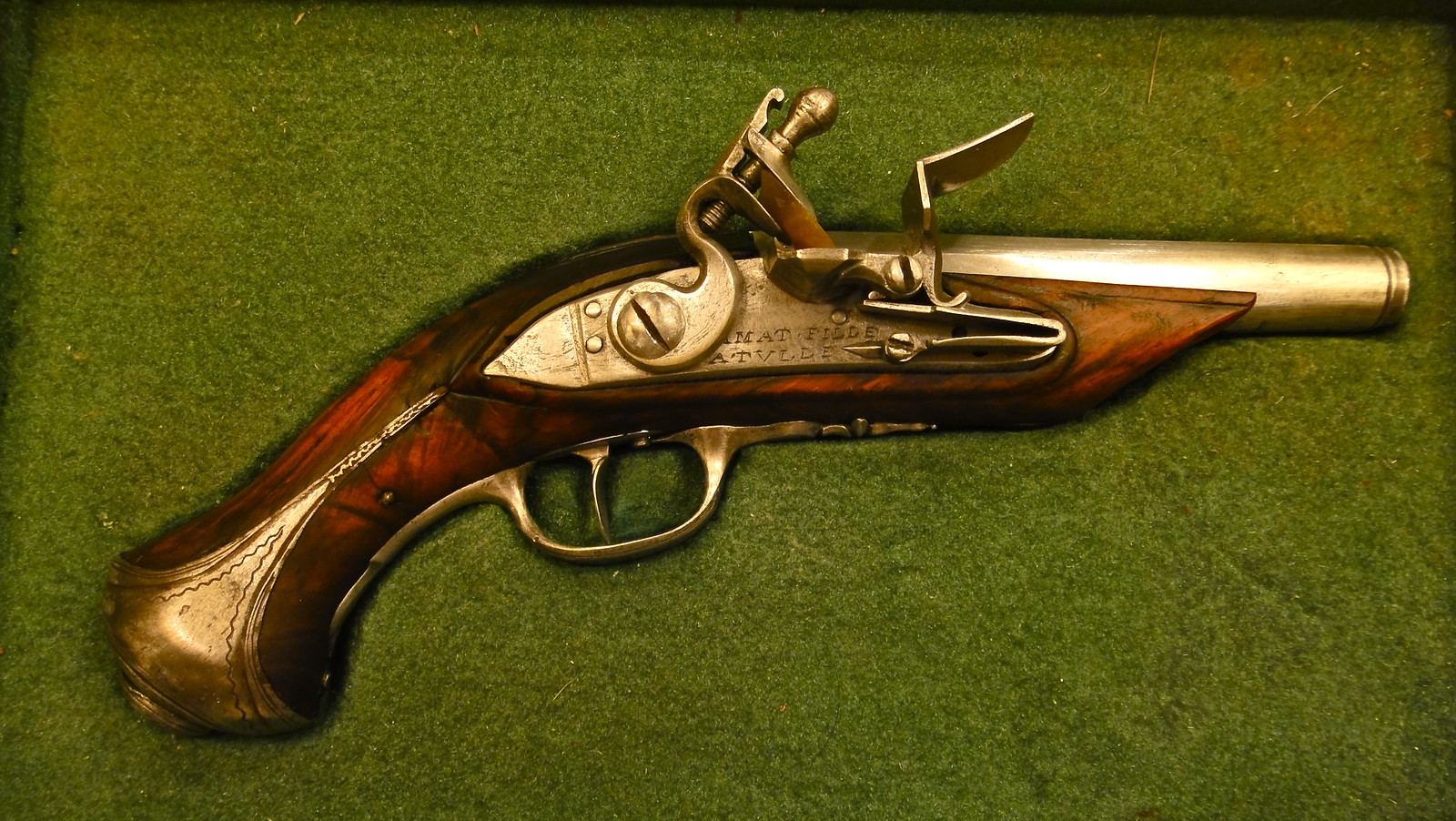
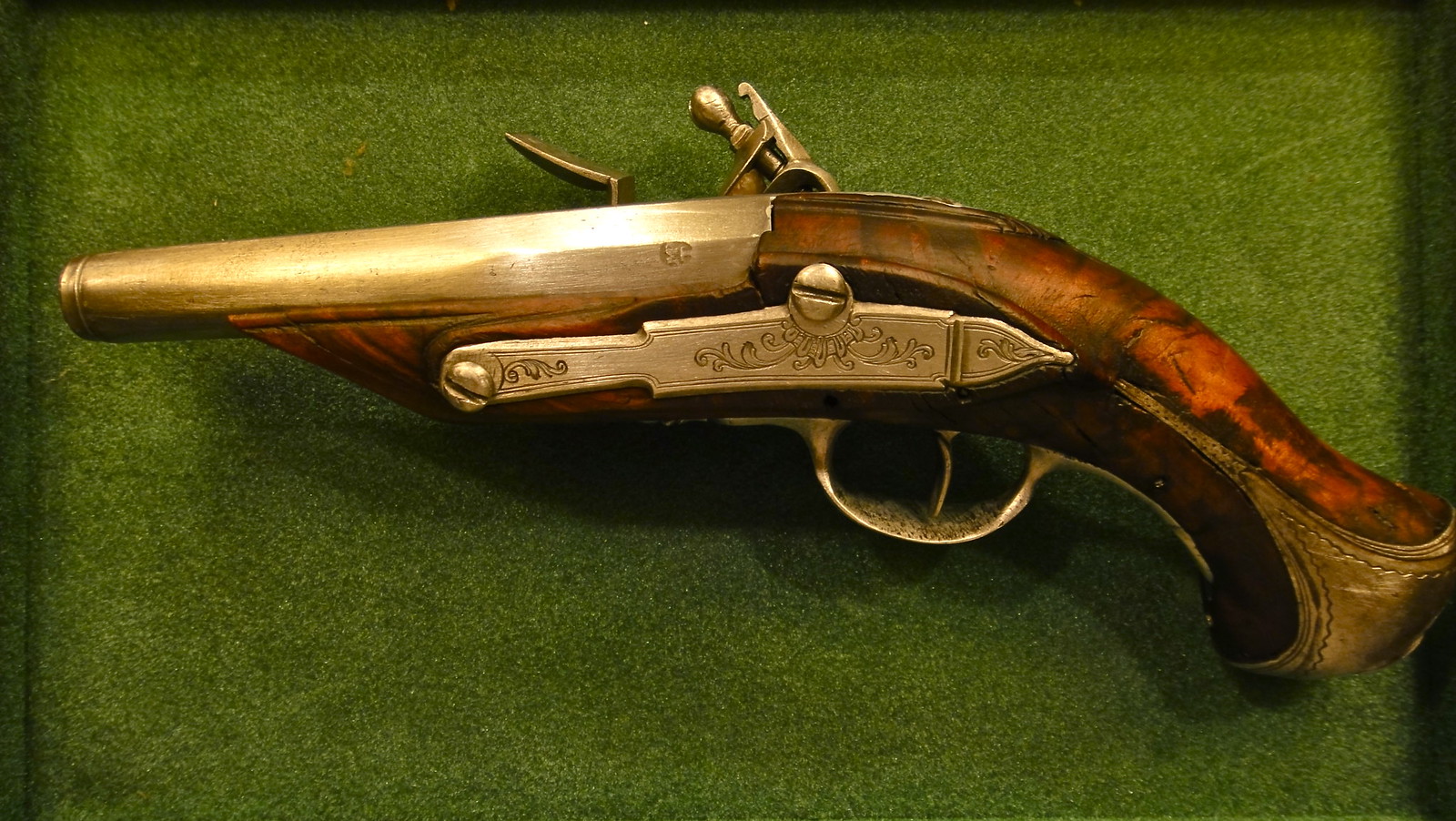
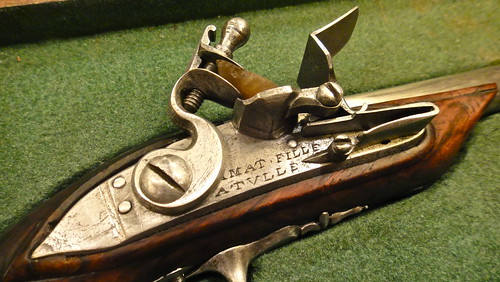
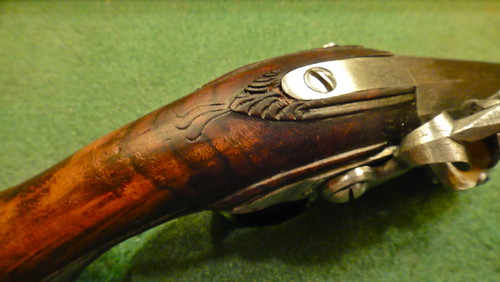
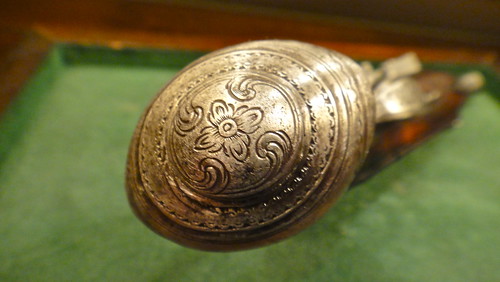
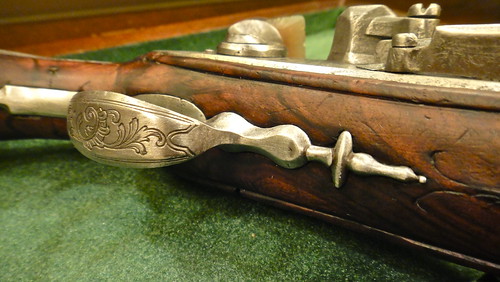
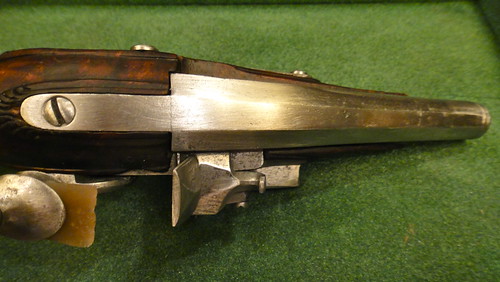
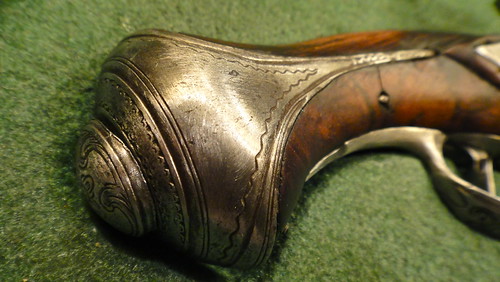
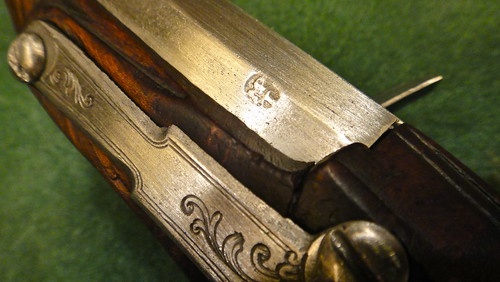
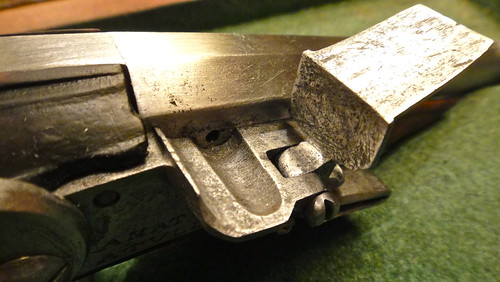
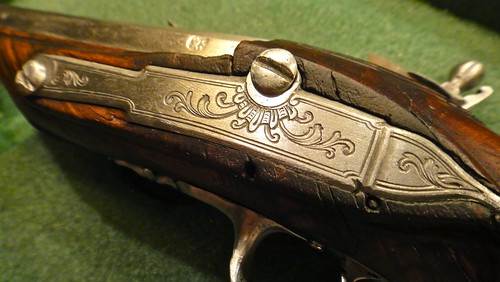
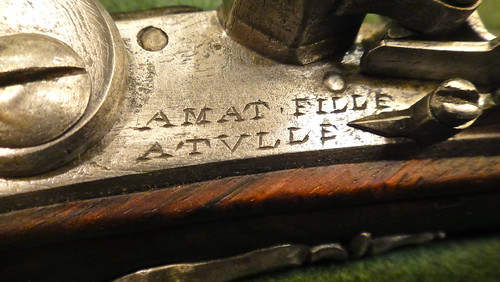
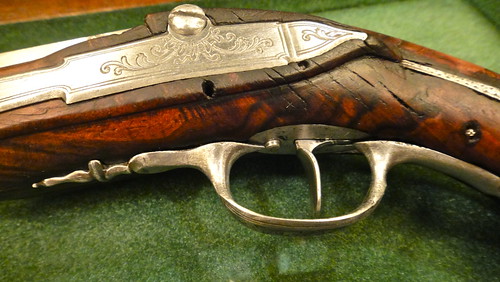
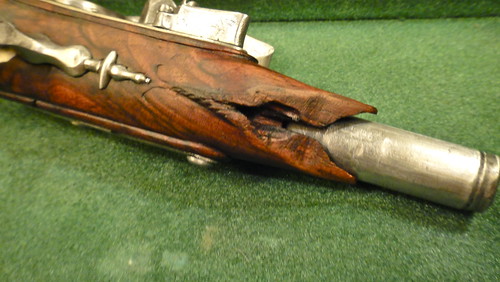
What you are looking at is my first muzzleloader. I bought this little pistol at an auction this past September and didn't receive it until Christmas. It has beautiful engravings on the side plate and butt cap, which were enhanced by cleaning. With some 0000 steel wool and Hoppe's 9, I was able to remove rust and a black film that was originally scattered on the metal. The barrel was significantly pitted and rusted, but I was able to clean that out. After that, the whole gun was given an oil and Renaissance wax coating. The ramrod is unfortunately missing. I would appreciate it if anyone knows what kind of ramrod this took so I can maybe replace it with a new one. The title stated 1770 French Pocket Pistol, but thanks to Wes/Tex he was able to uncover its history.
Finally was able to dig out my copy of "The Fusil de Tulle in New France 1691-1741" by Russel Bouchard. What you're looking at is either a Pattern of 1691 or Pattern of 1729-1734 made by Tulle for the Department of the Navy(problem is that actual whole pistols seem to be missing or unfound), which was responsible for France's overseas colonies...hence the name Compagnies Franches De La Marine, a confusing term that only indicates the troops were under the auspices of the navy and not the army. Rare pistol! Now for the bad news...the pistols had 14" barrels, trimmed to 12 inches in 1717 and continued at 12" and 20 balls/pound bore through it's production period. Basically, this pistol has been cut roughly in half! Both Patterns had a cannon muzzle ring at the muzzle, it is now supposed to strengthen that area and may be the reason someone's engraved a ring at the muzzle in an attempt to duplicate the look. Sorry.
The barrel stamp is that of Michel Pauphile, Sr. or Jr. Michel senior died in Feb., 1698 and his son Michel took over in the armory. Since they both seem to have used the same stamp, which is just a guess. The additional problem is that since only a sketch exists or the Pattern 1691 and only a 'best guess' sketch done in recent times of the Pattern 1729-34, actual identity will be very difficult. The lock should be marked "PAVILLE A TVLLE" in three lines, the "V" representing "U" but easier to make a stamp for. The barrel should have the MP over T plus either fluer de lis or crown or both. Closer identification may locate these. Why the lock is marked as it is, I don't know. Sadly, what you're looking at is half of a very rare pistol...I have no way of determining what kind of value that would leave. Kind of like sawing off the barrel of a Paterson Colt to make it more portable!



















